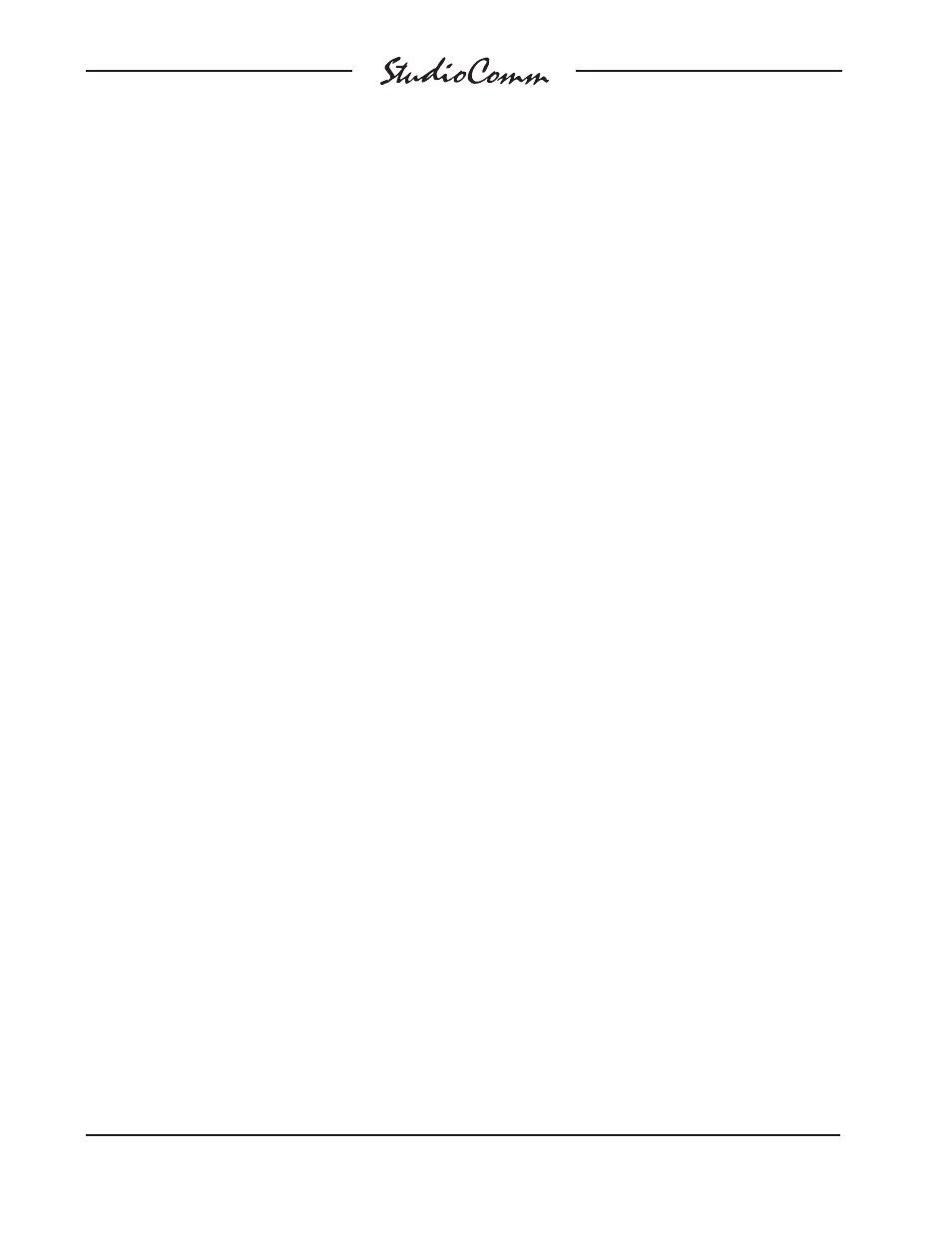Channel solo, Director cue – Studio Technologies 761 User Manual
Page 32

Issue 1, March 2008
Model 761/771 User Guide
Page 32
Studio Technologies, Inc.
for Surround
When enabled, and HD primary is the input
source, as the dialnorm level changes the
output level will automatically increase or
decrease as is appropriate. During confi gu-
ration of the system a dialnorm reference
level was entered. This level, typically in
the range of –27 to –24 dB, is compared to
the incoming dialnorm level value. If the re-
ceived dialnorm level is less than the refer-
ence value the output level is increased by
the difference. If the received dialnorm level
is greater than the reference value the out-
put level is decreased, again by the differ-
ence. Note that dialnorm levels are limited
to a range of –31 to –1 dB. This restricts the
maximum amount of level control to 30 dB.
The 4-digit display, when selected for out-
put level mode, will display all level changes
as they occur, including level changes due
to dialnorm activity. The received dialnorm
level values can themselves be viewed by
selecting the display dialnorm mode.
In either display mode the decimal point
“dot” in the lower-right corner of the display
will light whenever the input dialnorm value
matches the dialnorm reference value. This
topic is described in greater detail in the
Display and Display Mode section of this
section of this guide. The Technical Notes
section of this guide also will provide addi-
tional useful information about dialnorm.
Rotary Level Control
The rotary level control is used to manually
adjust the monitor output level. It is active
whenever the reference level function is not
active. The level control provides the ability
to adjust the monitor output level over an
approximately 70 dB range. The reference
LED will fl ash when the rotary level control
sets the output level to be the same as the
stored reference level. Whenever the rotary
level control is set to its fully counterclock-
wise position, the monitor output channels
automatically mute. Technically, this has
the same effect as when the mute all func-
tion is active.
Channel Solo
The channel solo function allows specifi c
channels to be selected for individual or
group “solo” monitoring. The function takes
place electrically “after” the input source
selection, downmix, and level control func-
tions. A channel selected for solo actu-
ally doesn’t change, but the solo function
causes the non-soloed monitor output
channels to mute. This leaves only the
soloed output active. Six buttons and six
LED indicators are associated with the
channel solo function. To solo a channel
simply requires pressing one of the solo
buttons. The buttons function in a press-
to-enable/press-to-disable “latching” mode.
The LED associated with a soloed chan-
nel will fl ash to indicate that solo is active.
More than one output channel can be se-
lected for soloing at a time. The Model 771
even allows all six monitor output channels
to be simultaneously selected for solo. This
seems like an “all soloed so none soloed”
mode but this condition is specifi cally
allowed so that an output channel mute
function can be provided. By fi rst soloing
all output channels an operator can then
“un-solo” specifi c channels, directly muting
them. It’s a bit confusing to describe
in words but is very simple to use and
can be very useful resource—try it out
and you’ll see!
Director Cue
Controlling the on/off state of the director
cue output is simply a matter of pressing
the director cue button. It functions in an
